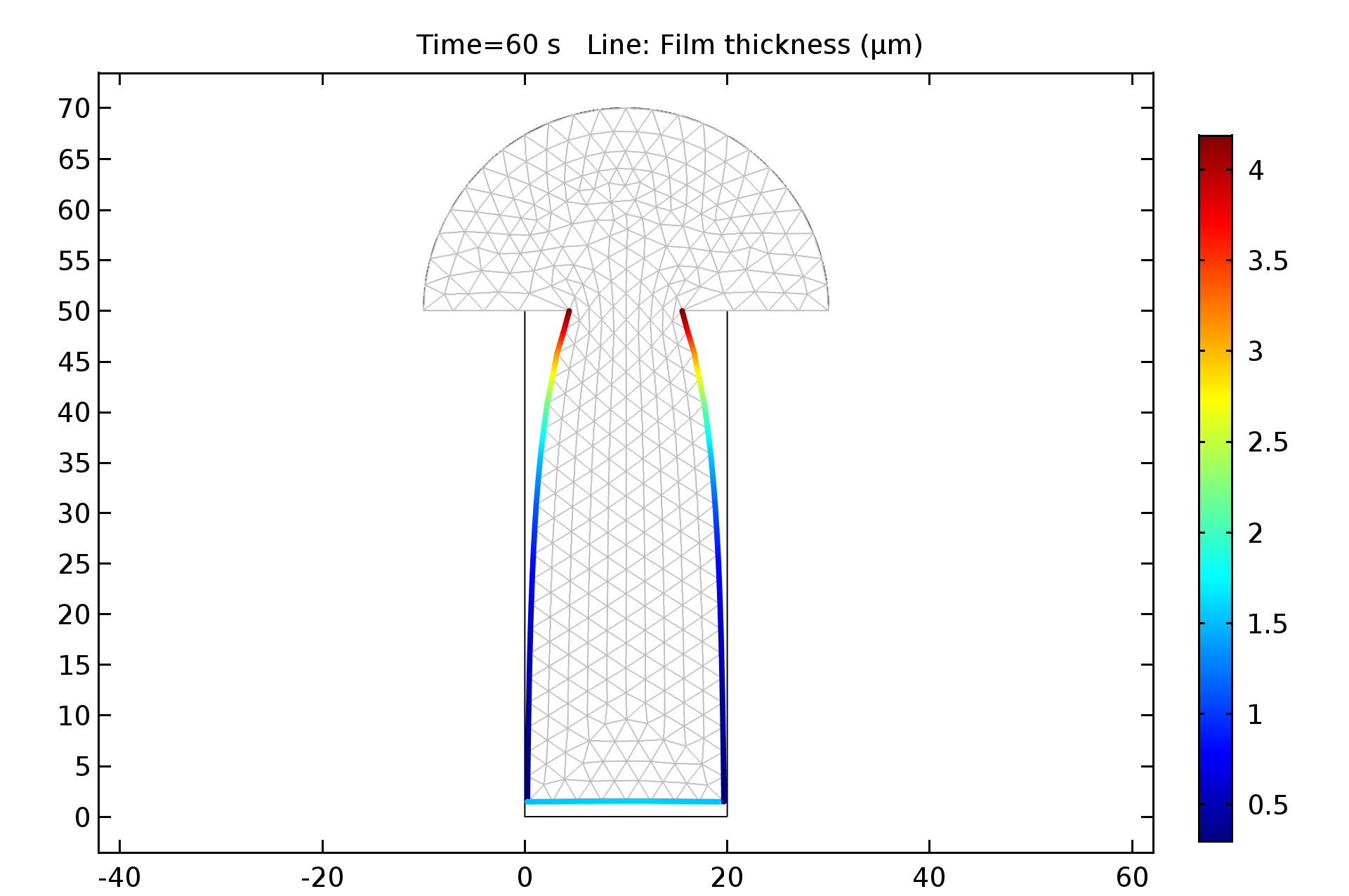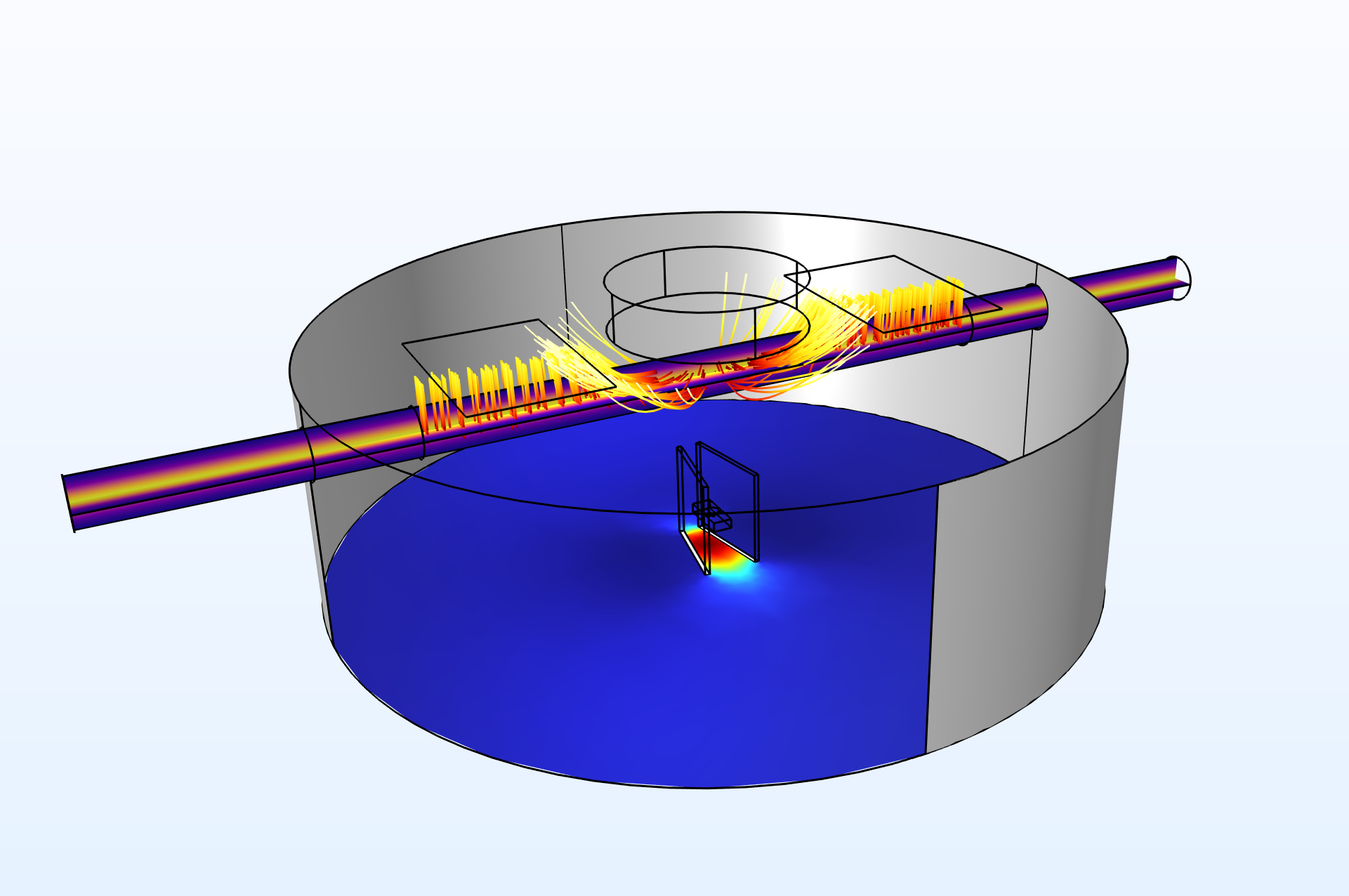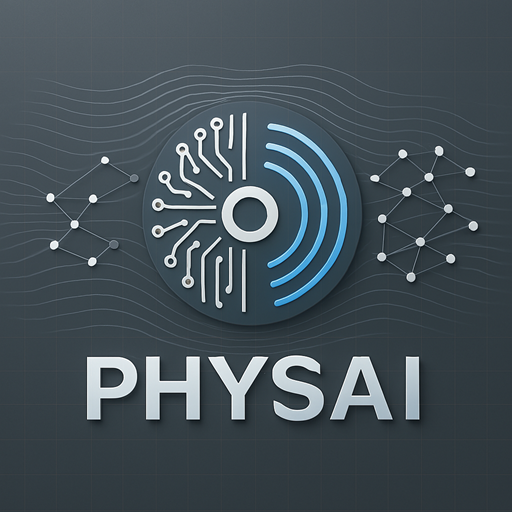Rarefied Gas Dynamics and Free Molecular Flow
In the free molecular regime (high Knudsen number \(\mathrm{Kn} = \lambda / L \gg 1\)), intermolecular collisions are rare compared to molecule–wall interactions. Typical applications include high-vacuum transport, charge-exchange cells, space instruments, and laser-based isotope separation. Using the COMSOL Multiphysics Molecular Flow Module, we model particle trajectories, wall scattering, and surface reactions to predict fluxes, deposition, and pumping performance.
Modeling Approach in COMSOL
- Free Molecular Transport: Test-particle Monte Carlo with specular/diffuse (cosine) reflection models; user-defined accommodation coefficients.
- Boundary Conditions: Inlets with Maxwellian velocity distributions, pressure-driven or effusive sources; pumps and skimmers as sinks with transmission probabilities.
- Thermal Transpiration: Temperature-dependent wall scattering and re-emission to capture Knudsen pumping effects.
- Metrics: Throughput, view factors, residence-time distributions, wall heat/particle fluxes, and local number density \(n(\mathbf{x})\).
The molecular flux leaving a wall with temperature \(T_w\) under diffuse re-emission obeys
and flux balance at the surface gives \(J_{\text{in}} = J_{\text{out}} + J_{\text{react}}\) once surface chemistry is included.

Detailed Surface Chemistry
At low pressures, surfaces govern system behavior. We incorporate adsorption, desorption, and reactions directly at boundaries using rate expressions coupled to molecular fluxes.
- Adsorption/Desorption: \(R_{\text{ads}} = s\, J_{\text{in}}\), \(R_{\text{des}} = k_{\text{des}}\, \theta\) with sticking coefficient \(s\), surface coverage \(\theta\), and Arrhenius desorption \(k_{\text{des}} = \nu_0\, \exp(-E_{\text{des}}/k_B T_w)\).
- Surface Reactions: Langmuir–Hinshelwood or Eley–Rideal pathways, e.g., \(A_{(ads)} + B_{(ads)} \xrightarrow{k} C_{(ads)}\). Coverage evolves via
where \(N_s\) is the site density and \(\nu_{ir}\) stoichiometric coefficients. These boundary ODEs are coupled to particle statistics to predict reaction yields and contamination rates.
Isotope Separation with Orthogonal Laser Excitation
We model selective excitation/ionization of an atomic or molecular beam using a high-intensity laser oriented orthogonally to the drift velocity. The orthogonal geometry minimizes Doppler broadening from axial velocity spread and creates a well-defined interaction zone.
- Beam Transport: Effusive source → drift region with collimation; compute spatial and velocity distributions at the laser plane.
- Spectroscopic Selectivity: Different isotopes have transition frequency offsets \(\Delta\nu\). Laser detuning and linewidth determine selectivity via the lineshape \(g(\nu)\).
- Rate Model: Ground–excited–ionized states with rate equations
Here \(\sigma(\nu)\) captures isotope-dependent cross sections. Coupling these rates to transit-time through the laser sheet yields overall enrichment and collection efficiency. Downstream electrostatic extraction or skimmer optics can be included to collect ionized species.

What You Get
- Validated free-molecular transport models with measured throughput and pressure calibration.
- Custom surface-chemistry libraries with temperature-dependent kinetics and coverage evolution.
- End-to-end isotope separation models: beam formation → laser interaction → product collection and efficiency.
